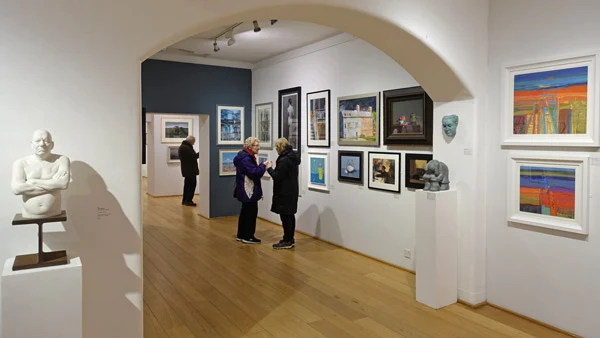I can't think for the life of me think why I haven't created this before.
After all, one of the frequently asked questions by artists is "Is this a scam?" - and our ever-increasing familiarity with what scammers try on somehow does not stop them trying!
On the page you will find summaries and links to relevant information relating to:
- What are art scams and frauds
- Websites which "out" scams and frauds
- How to spot a fake website - which has implications for the content of an artist's website
- How to spot fake goods or services
Intellectual property crime is committed when someone manufactures, sells or distributes counterfeit or pirated goods, such as such as patents, trademarks, industrial designs or literary and artistic works, for commercial gain.
- How to spot - and avoid - an email scam
- How to be safe when paying for goods or services online
This includes "red flags" for things to watch out for - and how to avoid being scammed - which are generally pretty simple precautions you can take.
 |
| extract from the page |
It's very definitely a page which will develop over time. You can find it as shown below
- Art Business Info for Artists
- Practice
- Office Practice & Law for Artists
- How to spot art scams and fraud
Or just put "art scams" or "fraud" into the Google search box on the home page
I've also got three more related pages planned and in the pipeline about:
- How to spot fake art - more for the collector than the artist but also highlights art practices best avoided!
- What to do about a gallery which goes "rogue"- this is the one about
- when the gallery doesn't pay up after selling your artwork and/or
- art galleries / dealers trading while insolvent
- goes bust - with your artwork still inside and
- what to do about it!
- Beware of money laundering - the latter is increasingly problematic and now rates as a "must know about" topic for all those who sell art as the UK enacted NEW legislation last month relating to money laundering - related to the EU's new fifth Anti-Money Laundering Directive.
Art dealers can face fines and jail time if they don’t report suspected money laundering transactions to authorities, according to guidance prepared by the British Art Market Federation in conjunction with the U.K. government. Bloomberg TaxThere's a few references below relating to the new legislation on money laundering.
- Can the art world clean up its act? | Financial Times
- New money laundering regulations cause confusion at London Art Fair The Art Newspaper - Mid-market galleries take a mixed approach to new law, with some pricing works below the €10,000 threshold to avoid dealing with new client ID requirements
- Last-Minute U.K. Law to Stop Money Laundering Frustrates British Art Dealers | Art News
If anybody has any suggestions for useful websites or other resources please let me know (or via my Facebook Page) and I'll add them in




























